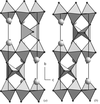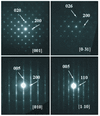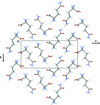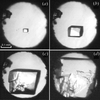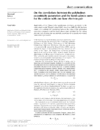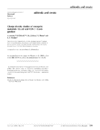issue contents
August 2008 issue

Cover illustration: The cover picture shows the strong and highly structured diffuse scattering from polymorph (II) of N-(p-methylbenzylidene)-p-methylaniline (MeMe) and indicates strongly correlated molecular motion not apparent from the Bragg analysis. Unlike polymorphs (I) and (III), which are disordered, polymorph (II) appears from Bragg scattering to be a perfectly normal ordered molecular crystal. The section of diffuse scattering data shown is part of a full three-dimensional data set recorded on beamline 1-ID-C at the Advanced Photon Source at Argonne, Illinois. Courtesy of Professor T. R. Welberry and Andrew Beasley.
research papers












short communications
addenda and errata



 journal menu
journal menu












